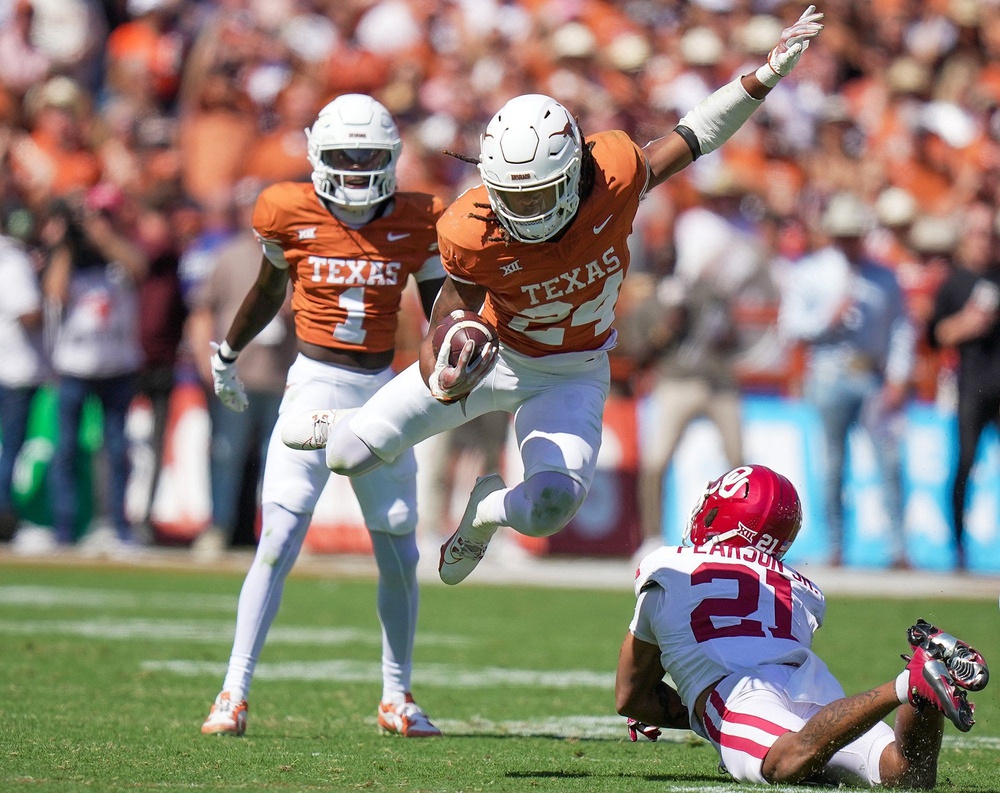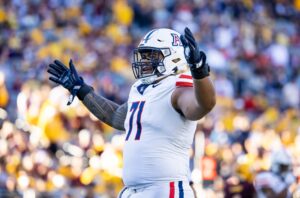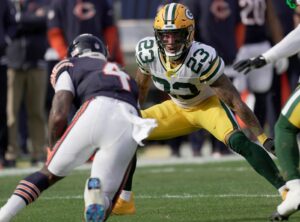The dust has settled after a wild free agency period filled with big-name signings and trades. Attention now shifts to what the future holds with the 2024 NFL Draft right around the corner. How will teams approach the draft after filling particular needs but leaving others untouched?
Changes in the QB Market
The Chicago Bears found themselves in an unprecedented situation this offseason. Thanks to a trade with Carolina last year, the Bears own the top pick in the draft, even though they won several games this season. Their biggest offseason decision occurred during free agency, though it wasn’t a signing. After much debate, Chicago traded 25-year-old quarterback Justin Fields and will (very likely) build around Caleb Williams. Williams will benefit from the additions of Keenan Allen, D’Andre Swift, and whoever the Bears select with their own pick at nine.
The Atlanta Falcons entered this offseason desperately needing to upgrade at quarterback, and their solution is Kirk Cousins. Acquiring Darnell Mooney and Rondale Moore filled another massive need for Atlanta: wide receiver depth. Writing is on the wall that the Falcons will focus on defense in the draft, especially in round one, after fixing their offense’s needs.
Once you get outside of the top ten, there’s a run of teams who let go of their starting quarterback from last season. Minnesota owns the 11th pick in the draft, and they’re looking to replace Cousins after losing him in free agency. Earlier this month, they traded with Houston for the 23rd overall pick. Now that Minnesota has two picks in the first round, rumors suggest they’ll use them and trade up for a premier prospect. Either way, selecting a quarterback in round one appears to be a sure thing for the Vikings.
Up next is the Denver Broncos, who cut Russell Wilson but still owe him $85 million over the next two years. They haven’t had a winning season since 2016, and it’s time to hit the ‘reset’ button. Getting a new quarterback on a cheap rookie contract is one way to offset cap-related issues caused by releasing Wilson. Denver’s second-round pick belongs to New Orleans, so if they want a rookie quarterback, they’ll have to do it in round one of the NFL Draft.
The Las Vegas Raiders are a coin-flip to draft a quarterback this year. They added veteran Gardner Minshew in free agency to pair with incumbent starter Aidan O’Connell, though neither are exciting options now or in the long run. If the Raiders decide against drafting a quarterback this year, they’re delaying the inevitable.
Changes in the WR Market
Once quarterback-needy teams get their guy at the top of the draft, attention shifts to wide receivers. Picks 4-6 belong to the Arizona Cardinals, Los Angeles Chargers, and New York Giants. Each could use a number one receiver but failed to acquire one in free agency. Marvin Harrison Jr., Malik Nabers, Rome Odunze, or tight end Brock Bowers would be excellent additions to these offenses.
After releasing veteran wide receiver Michael Thomas, the Saints are suddenly in contention to draft a receiver at #14. Barring a trade-up, top prospects like Harrison Jr. and Nabers are untouchable, but that shouldn’t discourage New Orleans’ front office. Chris Olave is an excellent young receiver, but this offense needs another playmaker to keep up with the modern NFL.
The Bengals potent receiver room could look entirely different by the start of next season. Star wideout Tee Higgins expressed displeasure after receiving the franchise tag and requested a trade. Additionally, Tyler Boyd is drawing interest in free agency after spending his entire career with Cincinnati. With two starters potentially heading elsewhere, drafting a replacement in round one or two is on the table.
Changes in the RB Market
This year’s running back class lacks high-end talent, so we might not see one drafted until the third round. It’s hard enough projecting the first ten picks of the draft, never mind the first 100 picks. Still, free agency indicates which teams need to add a tailback through the draft. The Panthers are still heading into the NFL Draft with Chuba Hubbard as their best option.
The Dallas Cowboys have a modern, analytical philosophy when dealing with running backs. The team cut Ezekiel Elliott last offseason and let Tony Pollard leave in free agency this year. These decisions result in a notably poor running back room that requires improvement through the NFL draft. The 56th or 87th overall picks are prime spots for Dallas to draft a running back.
Possible RB Target – Film Study
The Giants, Chargers, and Bengals each lost their franchise running backs during free agency. The Giants and Chargers signed Devin Singletary and Gus Edwards, respectively, but their skill sets are limited. This also applies to Cincinnati’s second-year tailback Chase Brown, who impressed down the stretch but lacks physicality. A “running back by committee” approach seems likely for each of these teams in 2024.
Main Photo Credit: Syndication: Austin American-Statesman






